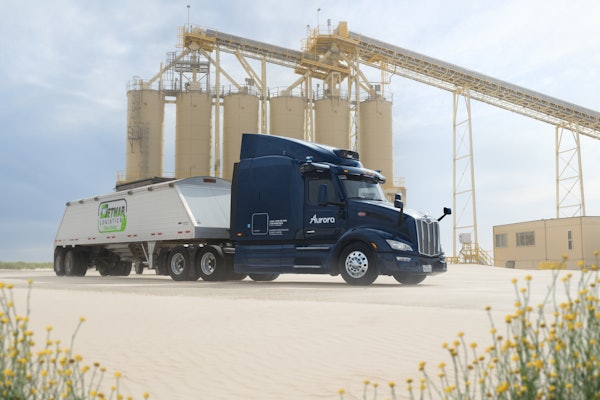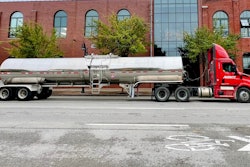The sixth Free And Secure Trade lane between the United States and Mexico has opened in Calexico, Calif. FAST is U.S. Customs and Border Protection’s expedited clearance program for known, low-risk cargo shipments. Other FAST lanes between the United States and Mexico have opened in Otay Mesa, Calif., and in Texas near Laredo, Pharr, Brownsville and El Paso.
U.S. Customs and Border Protection extended until May 1 the deadline for requiring Free And Secure Trade cards of all Border Release Advance Screening and Selectivity drivers. The BRASS program is an automated system to speed cross-border processing of certain products, and Customs will require carriers transporting BRASS merchandise to use only FAST-registered drivers.
Celadon Group has purchased the truckload van business – along with 370 tractors and 670 van trailers – of CX Roberson for about $22.7 million. The transaction did not include Roberson’s flatbed business and related assets.
Schneider National is opening 10 new regional brokerage offices this year, increasing the company’s third-party carrier network to 27 offices in the United States and Mexico. The new offices will be located in Indianapolis, Seattle, Detroit, New Orleans, Boston, St. Louis, Tulsa, Okla.; Charlotte, N.C.; Harrisburg, Pa.; and Monterrey, Mexico.
G.I. Trucking has added more than 4,300 “overnight” lanes among cities in Washington and Oregon. These are in addition to about 7,000 overnight lanes already available in the two states.
I recently spoke on the driver shortage at a conference of shippers. A member of the audience asked me to rate the current driver shortage for truckload carriers on a scale of one to 10, with 10 being the worst it could be. I replied that it currently rates a nine instead of a 10, only because the driver shortage for truckload carriers can get worse before it gets better.
Many regional, specialized and private fleets haven’t felt the full impact of the driver shortage. One reason is that truckload carriers trained many of their drivers. After a year or two of experience with a truckload carrier, a driver often has the opportunity to take a job that doesn’t require him to live on the road for days or weeks on end.
Rating the driver shortage for regional, specialized and private fleets on the same 10-point scale, it would be fair to assess most of these fleets around a six or seven. While drivers are hard to find, the shortage is not at crisis levels for these fleets. But again, the shortage can get a whole lot worse before it gets better.
As truckload driver average wages ratchet upward over $50,000 a year, fleets that offer drivers average pay of less than $40,000 will find it harder to persuade drivers to give up that extra money even if they can go home every evening. In addition, truckload carriers are finding ways to get drivers home more often and setting up regional operations in order to retain those drivers who need to stay at home.
Many fleets believe they can compete with truckload carriers for drivers simply by increasing their wages. But even by keeping wages at parity, few fleets are equipped to effectively compete in a tight marketplace for drivers.
I still see numerous private fleets treating driver recruiting as if it were a personnel function. This mindset is based on the premise that good jobs are in short supply – that all the personnel department has to do is advertise the job, have prospects come in and fill out an application and pick out the best applicants. Hiring a driver inside a week is considered fast, with two weeks more the norm.
Truckload carriers, however, have spent enormous sums of money and time learning how to hire drivers instantly. Turning around a driver application within 24 hours now is commonplace. These carriers have learned valuable lessons in how to advertise, operate a recruiting hotline and follow up with applicants who don’t accept their initial job offer. Most private fleets have little experience with these aspects of recruiting.
Being an effective recruiter not only keeps the trucks full but also is the critical first step toward retention. Keeping trucks full makes it easier to keep hiring standards high and part ways with drivers whose performance is subpar.
As the driver shortage hits private and regional for-hire fleets, maintaining strong hiring standards will become one of the major challenges facing managers. These operations will have to learn lessons from truckload carriers, which generally have liberalized their policies on:
Equipment specs – When was the last time you saw a truckload carrier operating a cabover tractor? There remain a handful that do, but for the most part carriers have accepted that they must spec equipment that drivers want to drive.
Hiring bonuses – Call it orientation pay or a bonus, most truckload carriers offer drivers money to join them. The practice of no pay for orientation quickly is going the way of the cabover.
Experienced hires – Many fleets recognize a driver’s previous experience with other employers in determining his initial seniority for pay. Just a few years ago, all new hires started at the bottom.
Riders or pets – Most truckload carriers now allow riders or pets in the tractor. While policies vary widely, the trend is to become more and more liberal.
Assigned tractors – This almost is universal among the major truckload fleets. Drivers don’t like slip-seating their tractors.
Take-home tractors – Once, few carriers allowed drivers to take tractors home. Now many allow them to do so, especially if they live more than 25 miles from their terminal.
Rehires – As competition for drivers heats up, some good drivers will leave and then want to come back. Most carriers will rehire and allow the driver to come back at his old seniority level.
As the driver shortage worsens, these are some of the considerations for fleet managers at regional, specialized and private carriers. Competing for drivers is not just a wage issue.









